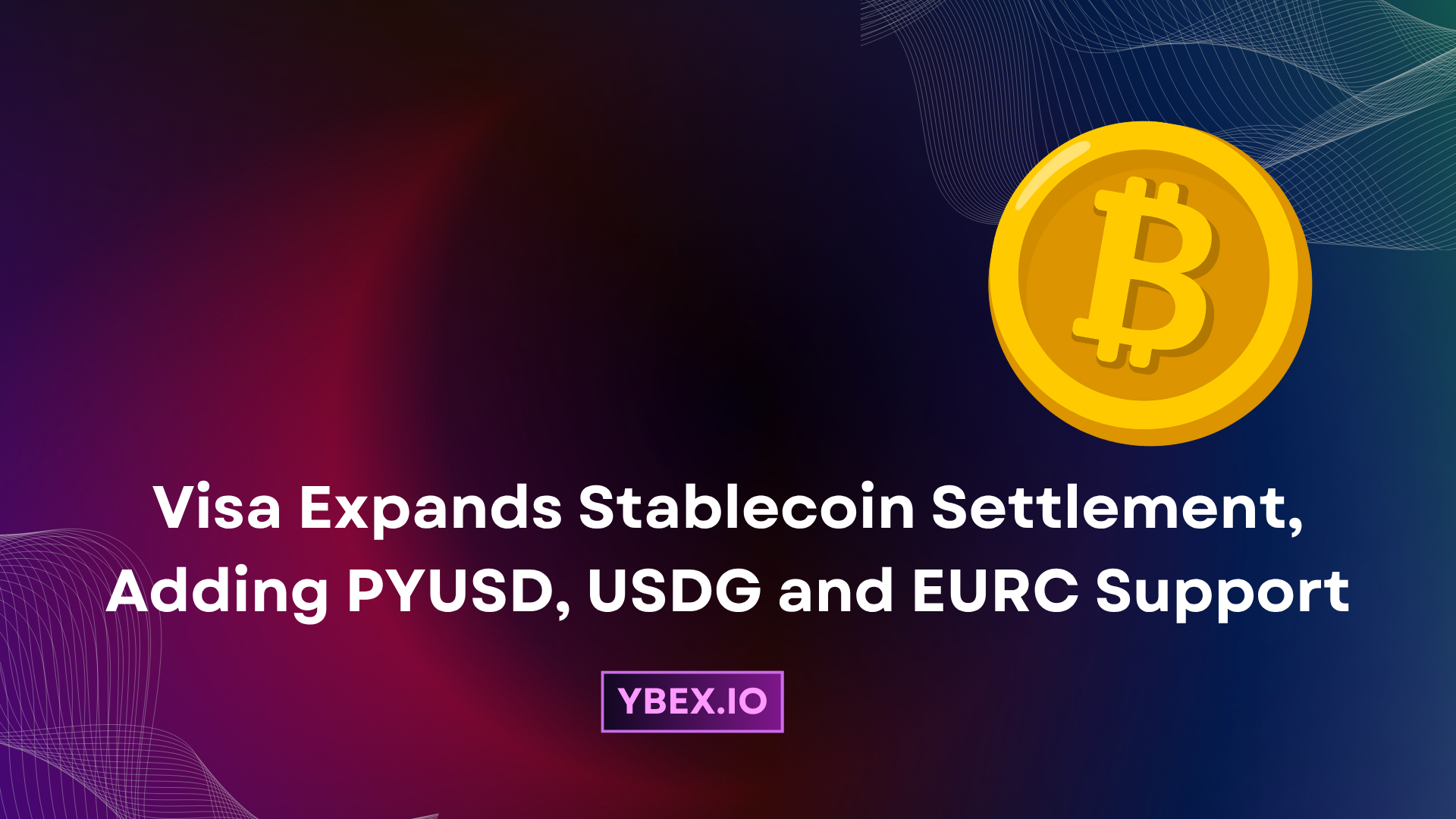
Visa is widening its on-chain settlement infrastructure, adding Avalanche and Stellar to the list of supported blockchains and introducing support for PayPal USD (PYUSD), Paxos’ Global Dollar (USDG) and Circle’s Euro Coin (EURC). The move builds on Visa’s existing stablecoin program and aims to give merchants, fintechs and payment partners faster, cheaper cross-border settlement options.
CoinDesk first reported that Visa’s platform now spans four blockchains (Ethereum, Solana, plus the new additions Avalanche and Stellar) and four stablecoins, with PYUSD and USDG added via Paxos and EURC via Circle. Visa positioned the expansion as a step toward transforming “global money movement” with compliant, liquid digital dollars and euros.
The Block and Yahoo Finance corroborated the details, noting that the new networks complement existing Ethereum and Solana support, and that the added assets broaden settlement currency choices for institutional partners.
What exactly changed
- New chains: Avalanche (AVAX) and Stellar (XLM) are now enabled alongside Ethereum and Solana for Visa’s stablecoin settlement. That diversifies throughput and gives partners alternatives with different fee and finality profiles.
- New coins: PYUSD (PayPal USD), USDG (Paxos Global Dollar) and EURC (Circle Euro Coin) join the program. These sit next to existing dollar-stablecoin support and allow euro-denominated on-chain settlement for the first time on Visa’s rails.
- Use-case focus: Visa’s press statement says the expansion targets settlement—the behind-the-scenes movement of funds among acquirers, issuers, merchants and fintechs—rather than consumer card swipes.
Why Avalanche and Stellar?
Avalanche emphasizes high throughput and sub-second finality for enterprise-style transactions; Stellar is designed for low-cost cross-border transfers and has long targeted remittances and B2B payouts. Adding both gives Visa and partners flexibility to route settlement where latency, fee environment, and regional integrations make sense. Industry coverage framed this as a practical way to complement Ethereum’s security and Solana’s speed with networks geared for specific settlement patterns.
The issuer lineup: PayPal, Paxos, Circle
- PYUSD (PayPal USD) — issued by Paxos and already embedded across PayPal’s ecosystem. Integrating PYUSD into Visa’s settlement flow lets payment partners reconcile balances in a token many U.S. consumers already recognize.
- USDG (Global Dollar) — a Paxos U.S. dollar stablecoin pitched for institutional settlement and compliance-heavy use cases.
- EURC (Euro Coin) — issued by Circle, this provides a euro-denominated option for on-chain settlement, relevant for EU-based merchants and cross-border marketplaces that bill in EUR.
Industry context: Stablecoins meet mainstream rails
The expansion lands as stablecoins gain traction with payment networks and corporates. Recent earnings commentary and interviews emphasized Visa’s view that stablecoins are a complement to its network—especially for B2B and cross-border flows—rather than an immediate threat to consumer card volumes. At the same time, U.S. regulatory clarity around stablecoins has encouraged large processors to scale pilots into production platforms.
What it could mean for merchants and fintechs
- More options for settlement currency. Partners can settle with Visa in USD (via PYUSD or USDG) or EUR(via EURC), potentially reducing FX friction and weekend/holiday delays that affect cross-border payouts.
- Network redundancy. With four blockchains available, treasuries can route by fees, finality, or regional preference, improving resilience when one network is congested.
- Compliance comfort. Visa’s program stresses licensed issuers and transparent reserves, a key requirement for banks and public companies that need audit-friendly rails. (Visa’s release underscores expanding support within a controlled settlement framework.)
What to watch next
- Throughput and volumes. Visa hasn’t disclosed target settlement volumes per chain or asset. Watch for follow-up metrics or partner case studies indicating material migration from legacy wires to tokenized settlement.
- Interoperability with banks and acquirers. The speed advantage of on-chain settlement matters most if acquirer and issuer banks can post and reconcile those balances quickly. Look for banking integrations and proof-of-reserve reporting by issuers.
- Regional adoption. With EURC in the mix, EU-focused marketplaces could be early adopters; Stellar ties may suit remittance corridors. Subsequent partner announcements will indicate where traction is strongest.
Bottom line
Visa’s stablecoin program just became broader and more flexible. By adding Avalanche and Stellar and supporting PYUSD, USDG and EURC, the company is positioning on-chain settlement as production infrastructure for global payments—especially in B2B, cross-border and marketplace contexts. The next test is execution: scaling volumes, deepening banking integrations, and demonstrating cost and speed wins that justify moving more settlement off traditional rails and onto tokenized money.